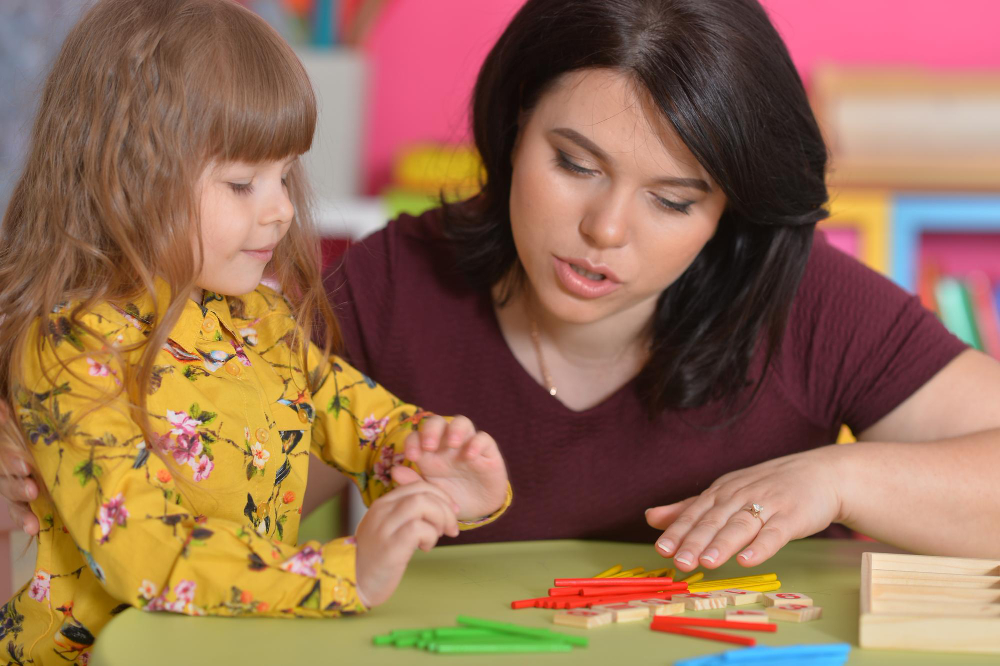Language Development
 Language development begins when a baby first cries out after they are born. They are using their cries to communicate with the world. Soon this language also consists of babbling, cooing, and gestures. Caregivers recognize these signals and are able to figure out what the infant needs. This babbling allows the infant to gain experience in language. Caregivers often respond to infants by talking “motherese”, a high-pitched sing-song voice. “The properties of motherese are thought to enhance early language acquisition by eliciting the infant’s attention and demonstrating important aspects of the language” (Masataka, 1992). During late infancy, a child speaks his first words and the communication process continues. During early childhood, children understand phonology; the sound system of language, and morphology; the units of meaning involved in word formation. They also make advances in syntax and semantics so they are able to create more meaningful and recognizable sentences. In middle and late childhood, vocabulary increases and there are great advancements in grammar. Children also develop metalinguistic awareness and learn how to use language in appropriate ways at this time. During adolescence, there is an increase in the sophistication of words as well as an increase in the abilities of words. Writing and speaking improve and become more complex. Even into adulthood a person’s vocabulary increases and language changes, often in relation to an individual’s job (Santrock, 2008).
Language development begins when a baby first cries out after they are born. They are using their cries to communicate with the world. Soon this language also consists of babbling, cooing, and gestures. Caregivers recognize these signals and are able to figure out what the infant needs. This babbling allows the infant to gain experience in language. Caregivers often respond to infants by talking “motherese”, a high-pitched sing-song voice. “The properties of motherese are thought to enhance early language acquisition by eliciting the infant’s attention and demonstrating important aspects of the language” (Masataka, 1992). During late infancy, a child speaks his first words and the communication process continues. During early childhood, children understand phonology; the sound system of language, and morphology; the units of meaning involved in word formation. They also make advances in syntax and semantics so they are able to create more meaningful and recognizable sentences. In middle and late childhood, vocabulary increases and there are great advancements in grammar. Children also develop metalinguistic awareness and learn how to use language in appropriate ways at this time. During adolescence, there is an increase in the sophistication of words as well as an increase in the abilities of words. Writing and speaking improve and become more complex. Even into adulthood a person’s vocabulary increases and language changes, often in relation to an individual’s job (Santrock, 2008).
Children need to hear language in order to form their own. We know this because many studies have found that children who suffer from hearing loss are unable to successfully develop language. We do not develop language spontaneously just because we have biological capabilities. The brain needs a point of reference to form words and to understand others. The literature on the subject of hearing loss shows us that all children can develop language successfully with the right guidance.
Interested in learning more about language development in young children? ChildCareEd has a variety of online and in-person course options to help educators support language development in young children. Consider the following courses:
This is just a sampling of our course offerings. Visit our website to learn more about what ChildCareEd can offer in fulfilling your professional development requirements.
References:
Masataka, N. (1992). Motherese is a signed language. Infant Behavior and Development. 15(4), 453-460. Retrieved from ProQuest. (0163638372)
Santrock, J.W. (2008). A Topical Approach to Life-Span Development. (4th ed.). Boston: McGraw-Hill.
- CDA Subject Area 2
- 30 hour Texas Director Annual ONLINE
- Building Vocabulary
- Assessment of Language and Literacy Skills
- Building Bridges for Dual Language Learners
- Training Guide for Families from Diverse Language and Cultural Backgrounds
- Language Development in School Age
- Language Development in Early Childhood
- Using AI Language Models for Trainers
- Training Guide for Families from Diverse Language and Cultural Backgrounds
- Communication Skills in Child Care
- International Day of Sign Language
- The Crucial Role of Positive Teacher Interactions in Infant and Toddler Development
- The Power of International Sign Language in Early Childhood Education
- Developmental Milestones of Children Ages 1-3
- Managing Behaviors in the Early Childhood Education Classroom
- Sep 1 is National No Rhyme (Nor Reason) Day: Rhyming Fun & Playful Language Activities
- Why Finger Paint and Sand Tables Are Just as Important as Phonics: The Science Behind Messy Play
- 7 Skills Every Childcare Provider Should Master
- Child Development Milestones: Key Stages Every Educator Should Know!
- How can I support children’s language and literacy development?
- Understanding Developmental Milestones: What’s Typical and When to Worry
- How Can Teachers Support Every Part of a Child’s Development? 🧠❤️
- 🚩👶 What Are the Red Flags in Infant Development Every Educator Should Know?
- Supporting Dual Language Learners in Child Care Settings